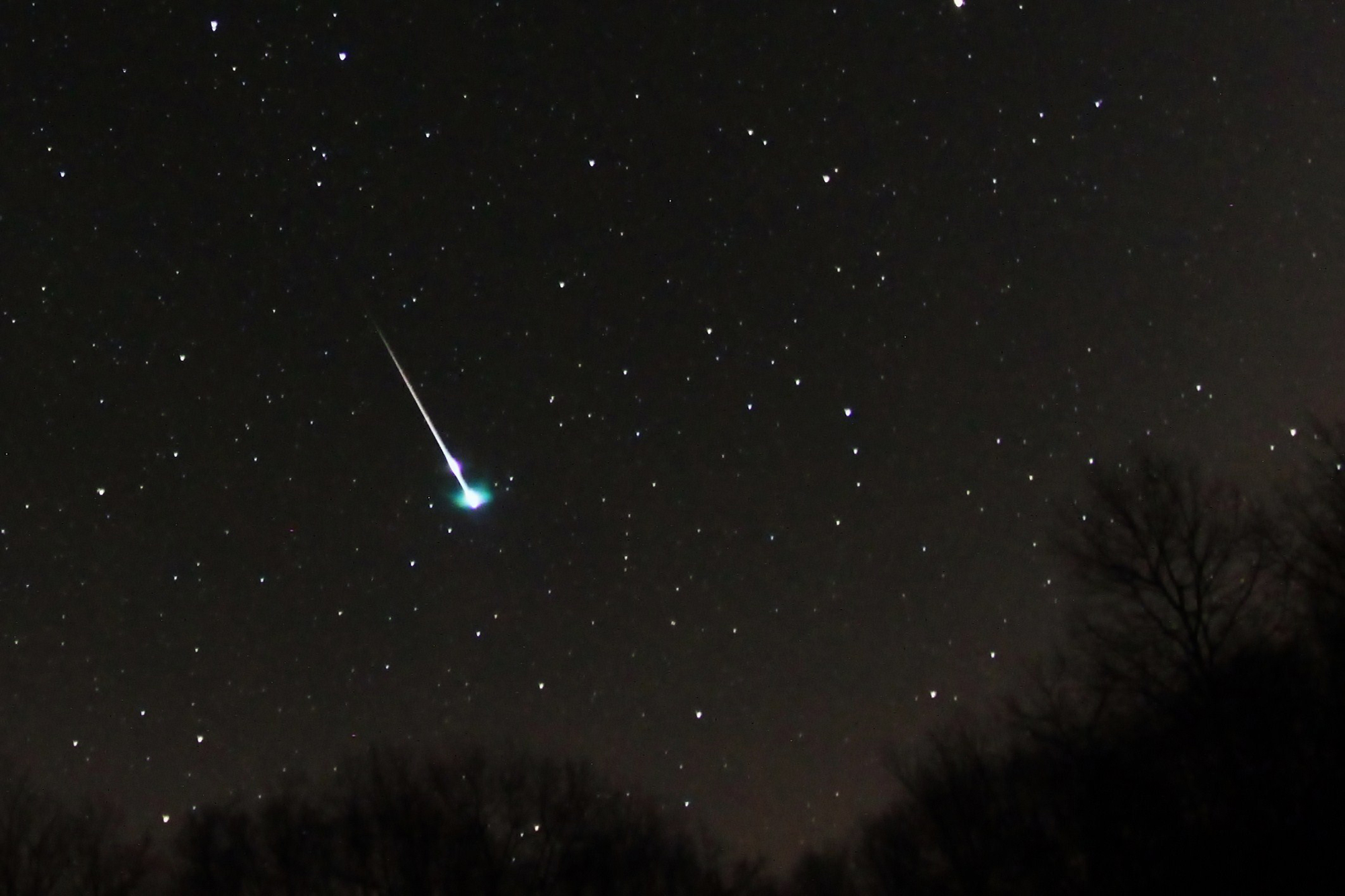Quadrantid meteor shower 2024: The year's 1st meteor shower blazes over North America on Jan. 3
Up to 120 shooting stars per hour could be visible during a brief peak of the Quadrantid meteor shower — the year's first meteor shower, coming to North America Jan. 3 and 4.

The Quadrantid meteor shower will peak this week and could bring up to 120 shooting stars per hour to the night sky.
It has the potential to be the strongest meteor shower of 2024, according to the American Meteor Society, but with such a short peak — just six hours — the shower's climax can often occur in daylight.
This year, the predicted peak is 7:53 a.m. EST (12:53 GMT) on Jan. 4, according to EarthSky. That makes the pre-dawn hours — from around 4:53 a.m. EST to dawn — the best time to observe the shower from North America. Those in western regions of the continent will have the best chance to watch for Quadrantids earlier at night. (If you got a new pair of stargazing binoculars or a nice beginner telescope for the holidays, they sadly will not help you spot any fast-moving meteors. However, here are the best skywatching events of 2024 to look forward to.)
About 25 shooting stars per hour are typically seen in a dark sky during the peak of the Quadrantids, according to the American Meteor Society. However, it's likely not worth traveling to dark skies for this event in 2024 because a bright last quarter moon will be in the sky just as the Quadrantids peak. Moonlight bleaches the sky and makes it more challenging to see fainter shooting stars, though the Quadrantids are known to produce bright fireballs that cut through light pollution of all kinds.
Meteor showers are typically named after the constellation from which they appear to come from. In the case of the Quadrantids, that's the constellation of Quadrans Muralis, though it is no longer recognized as a constellation. It's between the constellations of Bootes and Draco, near the end of the handle of the Big Dipper in the northern sky, according to NASA. Because of its position in the sky, the Quadrantid meteor shower is only visible in the Northern Hemisphere.
Shooting stars are meteoroids — small, rocky particles that strike Earth's atmosphere. These tumbling particles heat up and vaporize, releasing energy that's visible as streaks of light in the night sky. The Quadrantid meteor shower is thought to be caused by dust and debris left in the inner solar system by the asteroid 2003 EH1, which orbits the sun every 5.5 Earth years.
Breaking space news, the latest updates on rocket launches, skywatching events and more!

Jamie is an experienced science, technology and travel journalist and stargazer who writes about exploring the night sky, solar and lunar eclipses, moon-gazing, astro-travel, astronomy and space exploration. He is the editor of WhenIsTheNextEclipse.com and author of A Stargazing Program For Beginners, and is a senior contributor at Forbes. His special skill is turning tech-babble into plain English.

